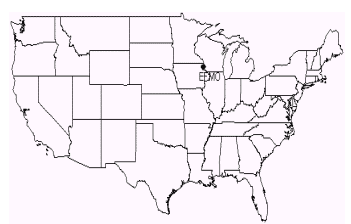
Senior Vice President, Global Indirect Business at Altair Engineering
Acommunication network is the backbone of any military operation. All military branches — the Air Force, Army, Navy, etc. — are assigned substantial ranges of radio frequency bands or have permanent access to radio frequencies to meet their missions. Control, surveillance, reconnaissance, and reporting systems play a vital role in the command and control system. Many of these requirements can only be met with the use of radio systems. The defense agencies also heavily rely on electromagnetic radiation for intelligence, surveillance, and reconnaissance (ISR) applications, such as missile early warning and signals intelligence.
However, with the explosion of wireless devices, the detection and classification of signals in both licensed and unlicensed spectrum is a growing concern. The technology is running fast and has brought a wide variety of user services. And not every user is a friend. Potential adversaries have weapon systems, particularly electronic warfare (EW) platforms, designed to challenge a country’s ability to use the spectrum effectively. The increasing demands of wireless systems also impose requirements on the spectrum regulator. This is where the role and value of an efficient spectrum management and monitoring system come in.

Technical analysis, frequency administration, international and national coordination, and resolving interference issues of the spectrum require a capable, multi-service system. An effective spectrum management and monitoring system should be comprehensive, providing all the capabilities to control the valuable radio spectrum assets of the defense forces.
The system supports defense forces at a central level with strategic, long-term spectrum management. It aids in the design and procurement of new techniques and frequency management. The hierarchical frequency management process from the long-term planning at the central level down to the short-term needs at tactical level is one of its many potentials.
Effective terrestrial radio communication for defense (Air Force, Army, and Navy) applications in rugged terrain and EW threats give rise to exceptional demands concerning reliability and durability. Altair WRAP offers the analysis and computational tools required for all applications to meet these demands. WRAP is a country-level 3D geospatial information and spectrum management system. The basic input for WRAP comes from maps, i.e. GIS and topographical databases and on top of these datasets 3D modeling takes place. It does the entire radio network planning — where to have transmitters, receivers, etc.
It assist in frequency allocation within the available band and based on the allocations it starts tracking, for example, a military vehicle.
WRAP’s radar coverage feature is useful, especially on the border areas having ground based radar. GIS and Clutter (unwanted reflections from terrain and sea) can be included. The detailed geodata gives better results — height, elevation, terrain and many other parameters can be checked. WRAP helps in detecting blind spots as well as targets (given altitude) with Radar Cross Section of 100m2, 10m2, and 1m2. Line-of-sight coverage for optical sensor systems along with the range for radio sensors such as direction finders and surveillance receivers can be calculated. The impact of jamming on the radio communication coverage can also be analyzed.
Satellite communications generally use multiple frequency bands to transmit data more quickly, enabling long-distance transmissions. WRAP, a comprehensive software tool, has the functionality for most computational and analysis requirements within radio communications and data transfer in a vast frequency spectrum. Footprints from satellites on the Earth’s surface can be calculated to determine coordination areas. Earth and terrestrial stations radiating towards the geostationary orbit can be analyzed for potential interference to satellites.
Other satellite interference in military communication can be fatal for missions. WRAP calculates the equivalent noise increase in receivers in satellite networks due to interference from other satellite networks. It calculates interference between Space services and terrestrial services, coordination contours (often power flux density) for satellite emissions, and interference in Space from terrestrial stations (for instance, along the geostationary orbit).
As the world becomes ever more connected, the communication infrastructure is critical, be it terrestrial or Space. Effective spectrum management and network planning are vital for mission-critical safety communication users. Going forward, the demand for tools giving a flexible capability to handle technical analysis of coverage, interference and optimization of the spectrum utilization will only increase.
An elegant ceremony marked the inaugural of Geospatial World Forum 2011, organised by GIS Development in Hyderabad, India during January 18-21, 2011. The event saw the confluence of diverse stakeholders

Sunil Narumalani, Robert Rothwell, Brian Witcher, Lisa Thomas
© Geospatial Media and Communications. All Rights Reserved.